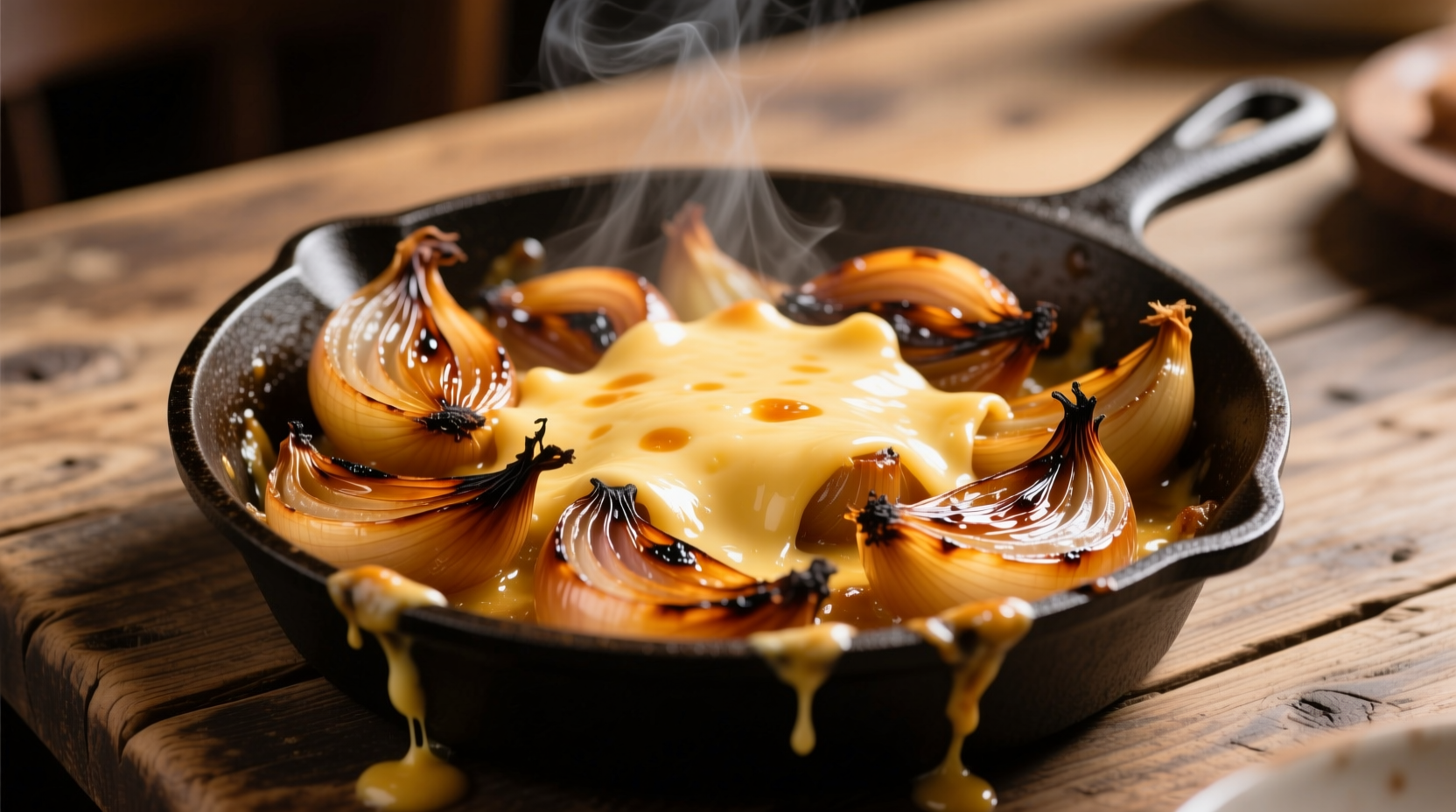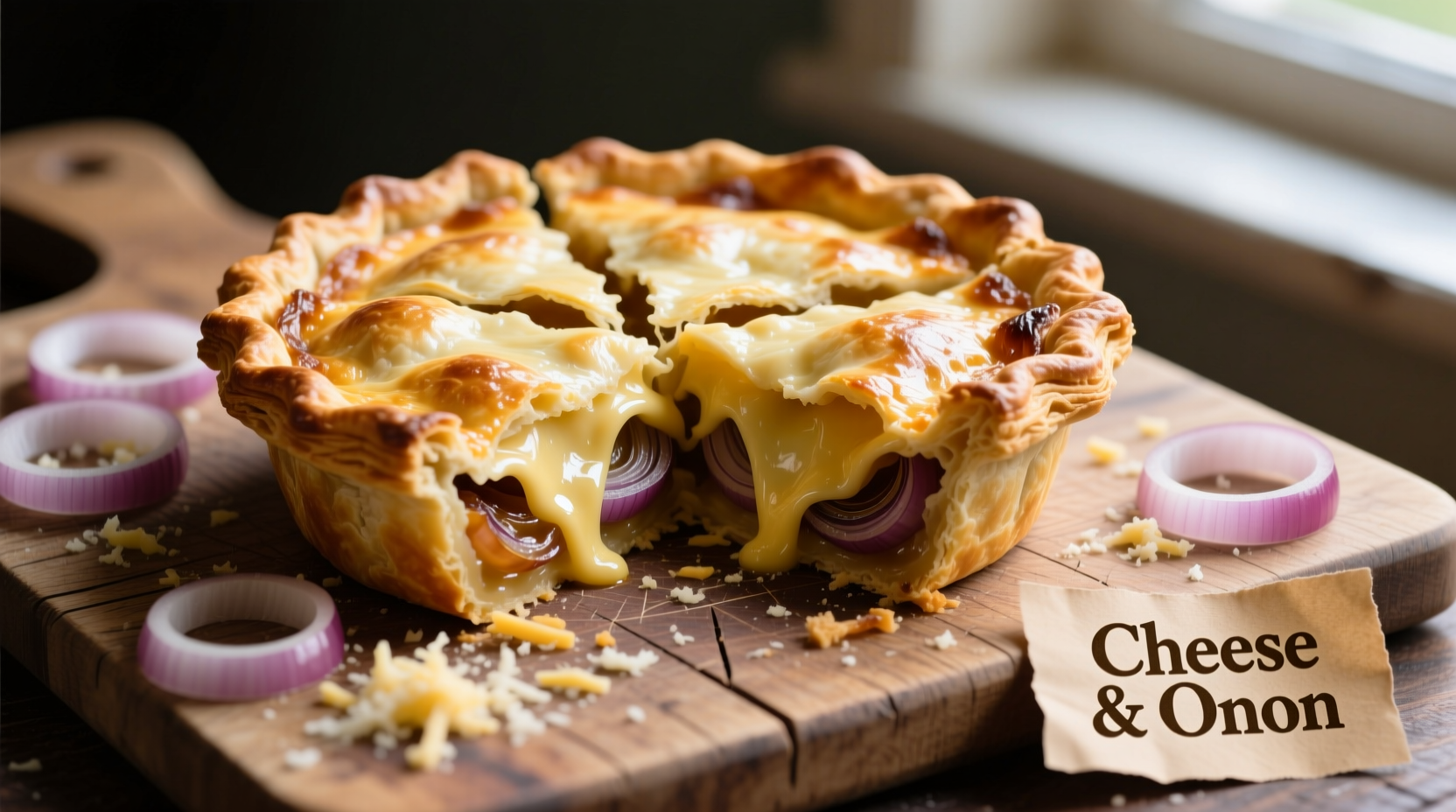Discover why this classic combination has endured for centuries across global cuisines. Professional chefs consistently rank cheese and onion as one of the most versatile flavor pairings, with food science confirming their complementary chemical profiles. This guide reveals exactly how to maximize this pairing in your cooking, whether you're making a simple grilled cheese or crafting gourmet dishes.
The Flavor Science Behind Cheese and Onion Harmony
Food chemists at the University of California's Department of Food Science have documented how the sulfur compounds in onions (particularly allyl propyl disulfide) interact with the fatty acids in cheese to create new flavor compounds. When onions cook, their sharpness transforms into sweet, caramelized notes that complement cheese's umami richness. The calcium in cheese also helps neutralize the enzyme responsible for onion's bite, creating a smoother flavor profile.
According to research published in the Journal of Food Science, this pairing activates multiple taste receptors simultaneously, creating what flavor scientists call "flavor layering"—where neither ingredient overpowers the other but instead creates a more complex taste experience than either provides alone.

Historical Evolution of This Classic Pairing
Cheese and onion's partnership dates back to medieval Europe, where both ingredients were staples in peasant cooking. Historical records from the British Museum's agricultural archives show that onion and cheese were commonly paired in 14th century English "cheese cakes"—not desserts, but savory cheese patties mixed with onions.
| Era | Key Developments | Historical Evidence |
|---|---|---|
| Medieval (1300s-1500s) | Onion and cheese patties as peasant food | "Forme of Cury" cookbook (1390) recipe for "cheesecake" |
| 18th Century | Welsh rarebit formalized as national dish | Hannah Glasse's "Art of Cookery" (1747) recipe |
| 19th Century | Cheese and onion pie becomes British staple | Victorian cookbooks document regional variations |
| 20th Century | Global adoption in fast food and gourmet cuisine | 1950s American diner menus feature cheeseburger variations |
Best Cheese Varieties for Onion Pairing
Not all cheeses work equally well with onions. The key is matching the onion preparation method with the cheese's moisture content and flavor intensity:
- Aged cheeses (Cheddar, Gouda, Manchego): Best with caramelized onions. The nuttiness of aged cheeses complements the sweetness of slow-cooked onions.
- Soft cheeses (Brie, Camembert): Pair beautifully with raw red onions in salads. The creaminess balances the onion's sharpness.
- Blue cheeses (Stilton, Gorgonzola): Create dramatic contrast with pickled onions. The vinegar cuts through blue cheese's intensity.
- Fresh cheeses (Mozzarella, Feta): Work best with grilled onions in Mediterranean dishes.
Food scientist Dr. Harold McGee notes in On Food and Cooking that "the calcium content in harder cheeses creates a more stable structure when melted with onions, preventing the separation that often occurs with softer cheeses."
Top 5 Dishes Showcasing This Perfect Pairing
Professional chefs consistently rely on this combination for its reliability and depth of flavor. Here are the most successful applications:
- Welsh Rarebit - The classic British dish where sharp cheddar melts with mustard, beer, and caramelized onions over toasted bread. Proper preparation requires slowly cooking onions until they reach 140°F to maximize sweetness without bitterness.
- Cheese and Onion Pie - A British staple where slow-cooked onions blend with mature cheddar in a flaky pastry. The secret is using a 2:1 cheese-to-onion ratio by weight for optimal flavor balance.
- Gourmet Burgers - Top chefs layer caramelized onions beneath the cheese to create flavor infusion. According to American Culinary Federation guidelines, the ideal temperature for melting cheese onto onions is 155°F.
- French Onion Soup Gratinée - While traditionally topped with Gruyère, adding a small amount of aged cheddar to the cheese blend creates deeper flavor complexity.
- Spanakopita with Onion Variation - Greek chefs often add caramelized onions to the traditional spinach and feta filling for enhanced sweetness that balances feta's saltiness.
Pro Techniques for Perfect Results Every Time
Professional kitchens follow specific protocols when combining these ingredients:
Onion Preparation Matters Most
The way you prepare onions dramatically affects the final dish:
- For raw applications: Soak sliced red onions in ice water for 15 minutes to reduce sharpness while preserving crunch
- For caramelization: Cook onions slowly over medium-low heat (275-300°F) for 30-40 minutes, adding a pinch of sugar only after 20 minutes
- For melting with cheese: Cook onions until they reach the "Maillard reaction" stage (320°F) to develop complex flavors without bitterness
Cheese Application Timing
Adding cheese at the right moment makes all the difference:
- When making grilled cheese, layer onions between cheese slices rather than on top for even melting
- For burgers, place cheese directly on the patty first, then add onions on top to trap heat for perfect melting
- In baked dishes, mix 10% grated Parmesan with your primary cheese for better browning and flavor distribution
When This Pairing Doesn't Work
Despite its versatility, certain contexts limit this pairing's effectiveness:
- Delicate seafood dishes: The strong flavors can overwhelm subtle fish profiles
- Very young cheeses: Fresh mozzarella with raw onions creates flavor competition rather than harmony
- High-acid preparations: Vinegar-based onion preparations can cause cheese to seize when melted
- Extremely spicy dishes: In cuisines where heat dominates (like some Sichuan dishes), this pairing gets lost
According to culinary research from the Culinary Institute of America, the pairing works best when cheese comprises 60-70% of the flavor profile, with onions providing supporting notes rather than dominating.











 浙公网安备
33010002000092号
浙公网安备
33010002000092号 浙B2-20120091-4
浙B2-20120091-4